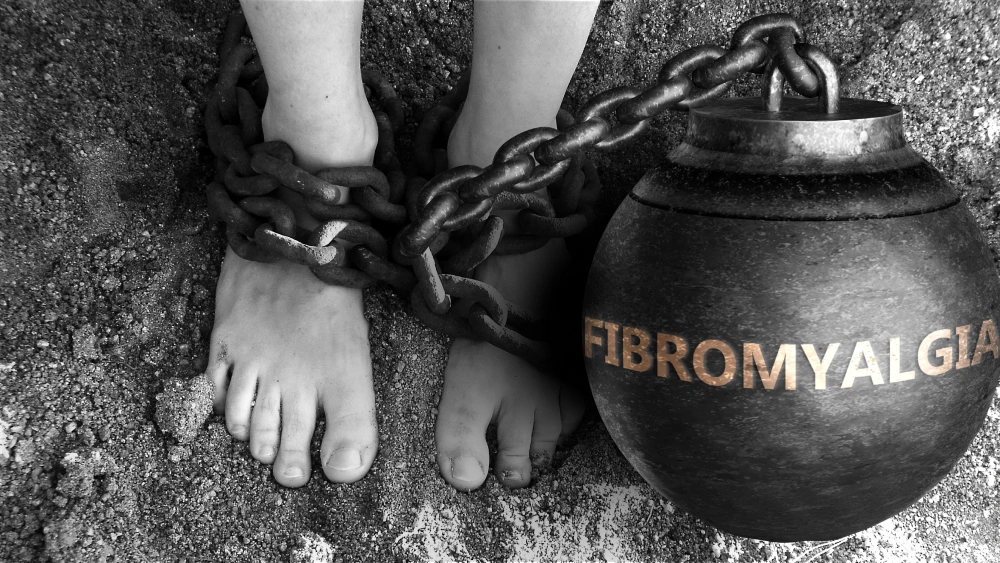What is Fibromyalgia?
Fibromyalgia is a chronic pain condition that affects about 2% of the population, according to the National Institutes of Health (NIH). It is characterized by widespread pain throughout the body, as well as other symptoms such as fatigue, sleep disturbances, and cognitive difficulties. The cause of fibromyalgia is not fully understood, but it is thought to be related to changes in the way the brain processes pain signals, as well as genetic, environmental, and psychological factors.
The Main Symptoms
The main symptom of fibromyalgia is widespread pain throughout the body, which may be described as aching, throbbing, shooting, or stabbing. The pain may be constant or intermittent, and it may be worse at certain times of the day or in certain positions. In addition to pain, people with fibromyalgia may also experience:
- Fatigue: People with fibromyalgia may feel tired or exhausted, even after a good night’s sleep.
- Sleep disturbances: Many people with fibromyalgia have trouble falling asleep or staying asleep, which can lead to fatigue and other symptoms.
- Cognitive difficulties: People with fibromyalgia may have difficulty with memory, concentration, and organization. These symptoms are often referred to as “fibro fog.”
- Other symptoms: Some people with fibromyalgia may also experience symptoms such as headaches, irritable bowel syndrome, and anxiety or depression.

Diagnosing Fibromyalgia
Fibromyalgia can be difficult to diagnose because it does not have specific diagnostic tests and its symptoms can be similar to those of other conditions. To diagnose fibromyalgia, a healthcare provider will typically consider a person’s medical history, perform a physical exam, and ask about their symptoms. They may also order blood tests or imaging tests to rule out other conditions.
The diagnostic criteria for fibromyalgia include widespread pain lasting for at least three months, as well as tenderness in at least 11 of 18 specific tender points on the body. Tender points are specific areas of the body that are more sensitive to pressure in people with fibromyalgia.
Treating Fibromyalgia
There is no cure for fibromyalgia, but there are a number of treatments that can help manage the condition and improve quality of life. Treatment options may include:
- Medications: There are several medications that can help manage the pain and other symptoms of fibromyalgia. These may include pain relievers, antidepressants, and anti-seizure drugs.
- Physical therapy: Physical therapy can help improve flexibility and strength, which can help manage pain and improve function.
- Exercise: Regular exercise can help improve physical function and reduce pain and fatigue. It is important to work with a healthcare provider or physical therapist to develop a safe and effective exercise plan.
- Other treatments: Other treatments that may be helpful for fibromyalgia include relaxation techniques, such as meditation or deep breathing, and cognitive-behavioral therapy, which can help people cope with chronic pain.

Living with Fibromyalgia
Living with fibromyalgia can be challenging, but there are things that people with the condition can do to manage their symptoms and improve their quality of life. These may include:
- Getting enough sleep: Getting enough sleep is important for managing pain and fatigue. It is important to establish a regular sleep routine and create a comfortable sleep environment.
- Eating a healthy diet: A healthy diet can help manage pain and fatigue, and may also help with other symptoms such as irritable bowel syndrome.
- Being active: Regular physical activity can help improve physical function and reduce pain and fatigue.
- It is important to work with a healthcare provider or physical therapist to develop a safe and effective exercise plan.
- Managing stress: Chronic pain and other fibromyalgia symptoms can be stressful, so it is important to find ways to manage stress. This may include techniques such as meditation, deep breathing, or talking to a therapist.
- Communicating with loved ones: It can be helpful to communicate with loved ones about the challenges of living with fibromyalgia and how they can support you.
- Seeking support: There are many support groups and resources available for people with fibromyalgia. Connecting with others who are living with the condition can be helpful and provide a sense of community.
Conclusion:
Fibromyalgia is a chronic pain condition that affects about 2% of the population. It is characterized by widespread pain, fatigue, sleep disturbances, and cognitive difficulties. While there is no cure for fibromyalgia, there are a number of treatments that can help manage the condition and improve quality of life. These may include medications, physical therapy, exercise, and other treatments such as relaxation techniques and cognitive-behavioral therapy. Living with fibromyalgia can be challenging, but there are things that people with the condition can do to manage their symptoms and improve their quality of life.
Further reading from the Mayo Clinic
Related links:



Comments are closed.